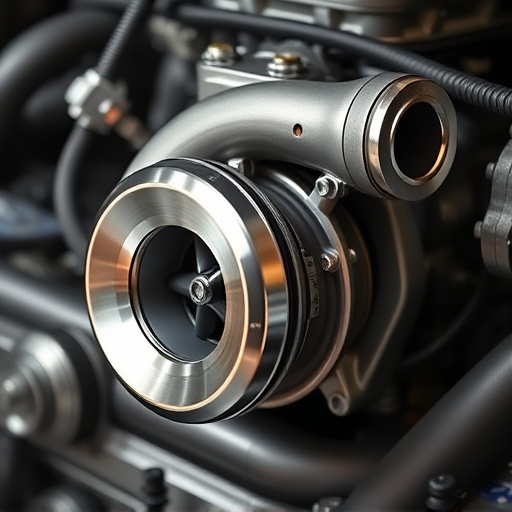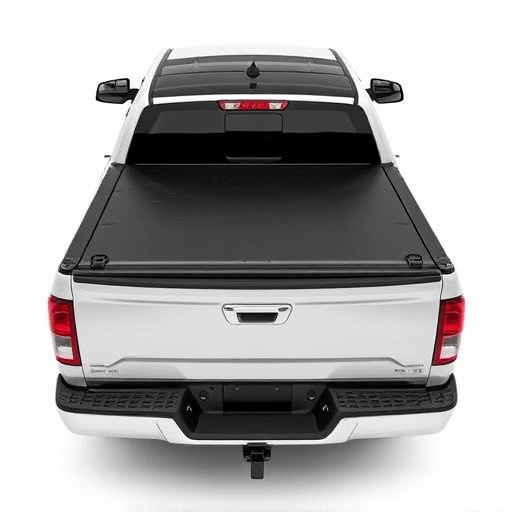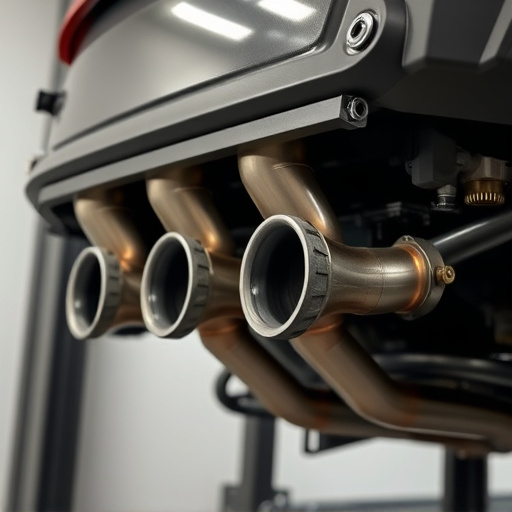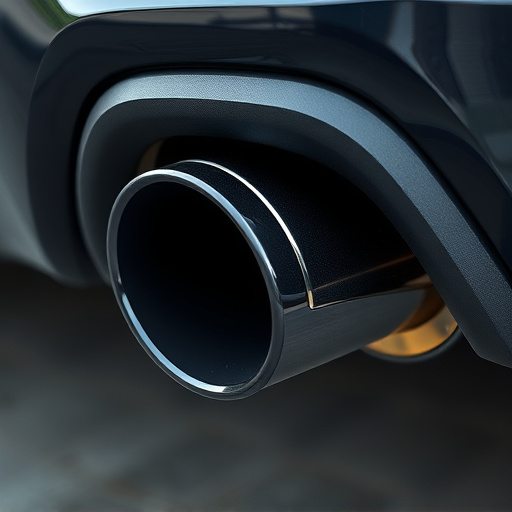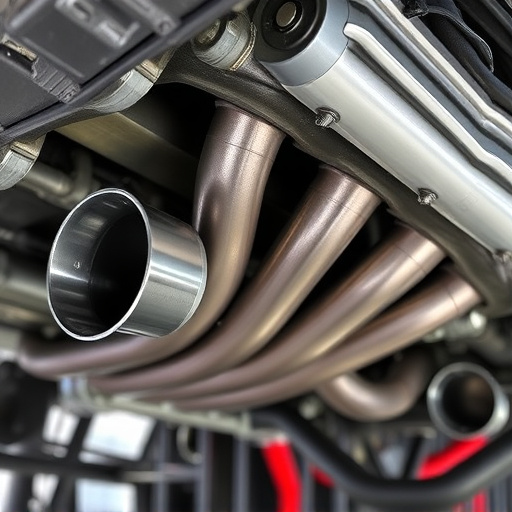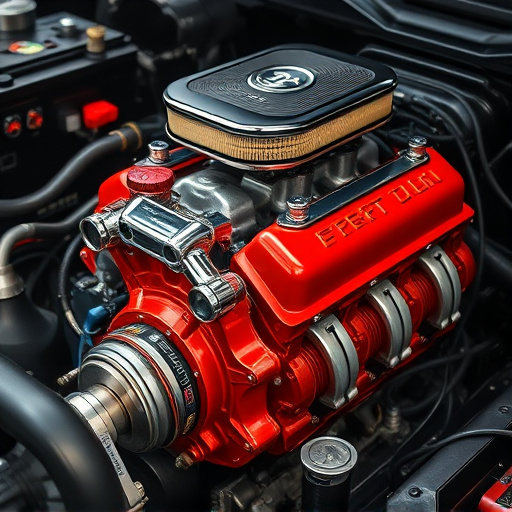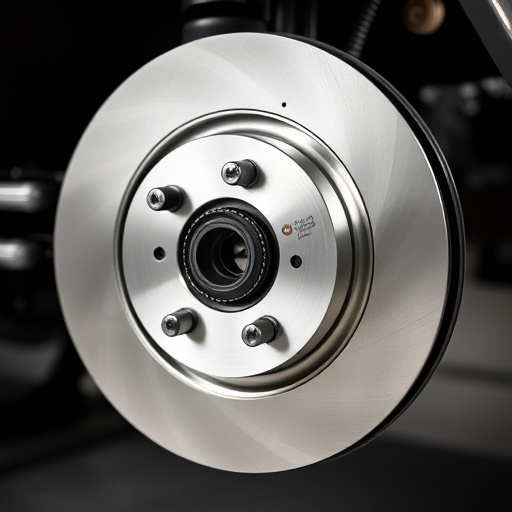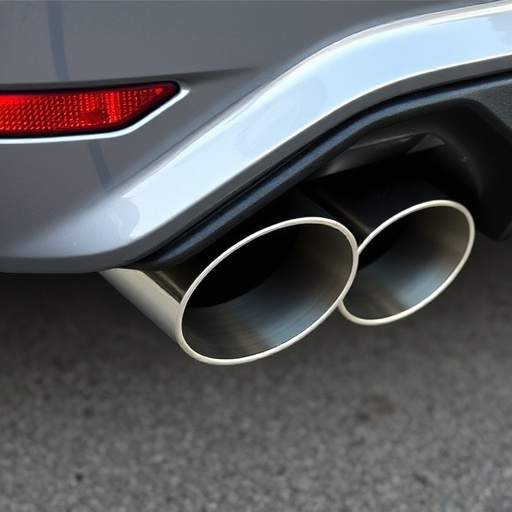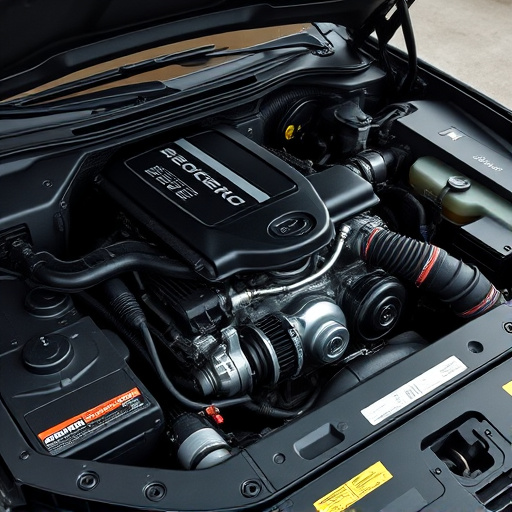Engine air intake is vital for turbocharged engines, optimizing airflow for enhanced power output and fuel efficiency. A well-designed system includes filters, pipes, and sensors to deliver clean, cool air to the turbocharger, improving throttle response and overall engine health while minimizing backpressure. Upgrading suspension components further amplifies these benefits, leading to better driving dynamics and increased horsepower/torque for an exhilarating experience.
“Unraveling the intricacies of engine air intake is key to unlocking the full potential of turbocharged engines. This comprehensive guide delves into the fundamental principles, highlighting how air filters and intake systems play pivotal roles in performance. We explore efficient air intake design strategies that not only enhance fuel efficiency but also boost power output. By understanding these concepts, enthusiasts and professionals alike can navigate the intricate world of turbocharged engines, ensuring optimal performance and reliability.”
- Understanding Engine Air Intake Basics in Turbocharged Engines
- Key Roles of Air Filters and Intake Systems
- Optimizing Performance Through Efficient Air Intake Design
Understanding Engine Air Intake Basics in Turbocharged Engines
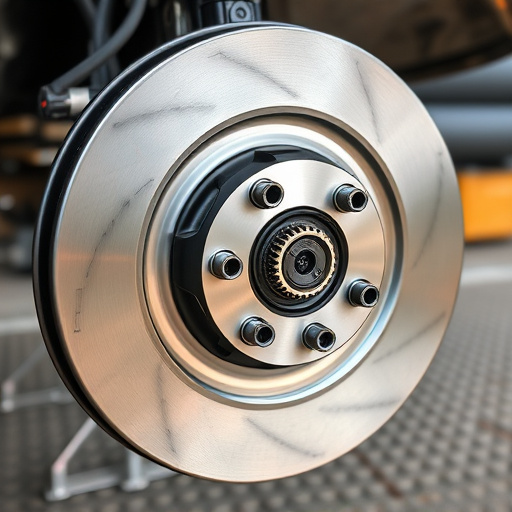
Engine air intake is a fundamental aspect of turbocharged engines, playing a vital role in their overall performance and efficiency. In simple terms, it’s the process of drawing in fresh air from the environment to fuel the engine’s combustion process. In turbocharged engines, this air is compressed by a turbocharger before entering the cylinder, which increases its temperature and pressure. Understanding this basic principle is crucial when optimizing the entire system, including exhaust systems and performance brakes.
The air intake system, therefore, acts as the gateway for oxygen-rich air to power the engine. It comprises various components like air filters, pipes, and sensors that work together to ensure a steady supply of clean air. By managing this flow effectively, it can significantly impact the engine’s power output, fuel efficiency, and overall health. Optimizing the air intake is often an overlooked yet powerful way to enhance turbocharged engines’ performance without significant modifications to other aspects like exhaust systems or performance brakes.
Key Roles of Air Filters and Intake Systems
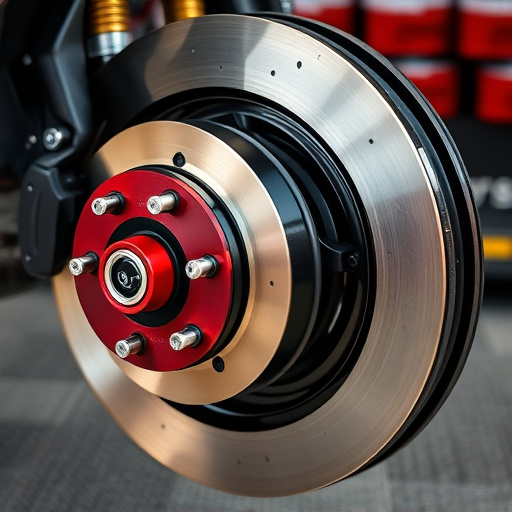
The engine air intake system plays a pivotal role in turbocharged engines, acting as the first line of defense against contaminants and ensuring the delivery of clean, rich air to the turbocharger. Air filters, integral components within this system, capture particulate matter, such as dust and debris, preventing them from entering the engine’s combustion chamber. This filtration process is crucial for maintaining optimal performance and prolonging the lifespan of sensitive engine components like pistons, valves, and turbos.
Beyond filtration, the intake system contributes significantly to overall engine efficiency. Well-designed intake manifolds and air filters promote smooth airflow, minimizing turbulence and pressure drop. This ensures that the turbocharger compresses air effectively, boosting power output while preserving fuel efficiency. Moreover, certain modifications like coilover kits or upgraded exhaust systems can complement a robust air intake system, further enhancing engine performance by optimizing valve timing and improving gas flow.
Optimizing Performance Through Efficient Air Intake Design
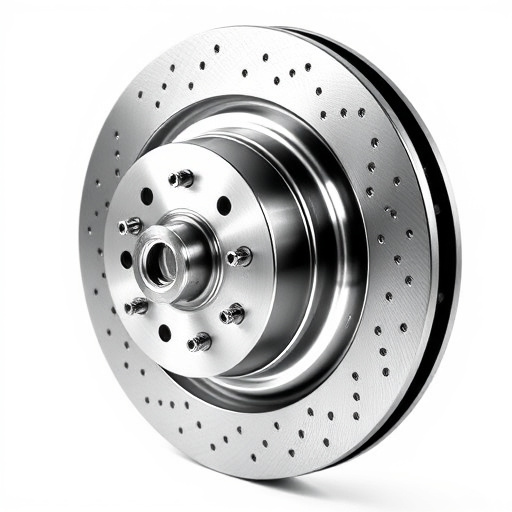
In the quest for optimized performance, especially in turbocharged engines, efficient engine air intake design plays a pivotal role. A well-engineered air intake system delivers cool, dense air to the turbocharger, maximizing its potential power output. This is crucial as turbocharged engines rely on forced induction to compress air and create more power compared to naturally aspirated engines. By seamlessly integrating with the engine’s architecture, carefully designed intake manifolds and air filters can minimize restrictions in airflow, reducing backpressure and allowing for a smoother combustion process.
This efficiency translates into improved throttle response, higher horsepower and torque outputs, and overall enhanced driving dynamics. Upgrading suspension components like coilover kits or optimizing exhaust tips can further complement the benefits of a well-optimized engine air intake system. The synergy between these elements creates a powerful combination that unleashes the full potential of turbocharged engines, offering drivers an exhilarating and responsive driving experience.
In understanding how engine air intake affects turbocharged engines, it’s clear that efficient air intake design plays a pivotal role in optimizing performance. By enhancing airflow and minimizing restrictions, well-designed air filters and intake systems can significantly improve power output, fuel efficiency, and overall engine health. This knowledge is crucial for automotive enthusiasts and engineers alike, as it enables them to make informed decisions when modifying or maintaining turbocharged vehicles, ultimately leading to a more satisfying driving experience.
